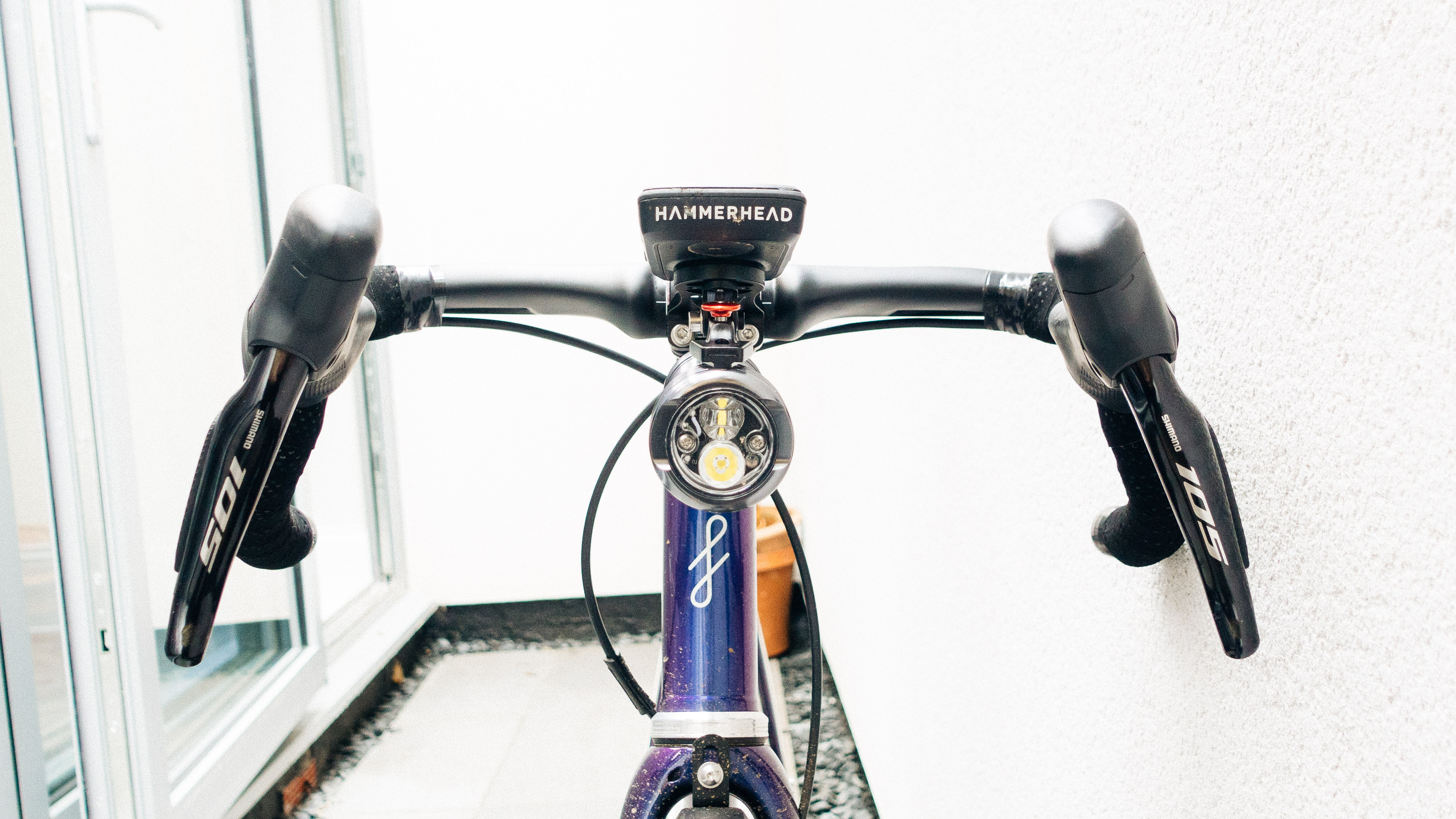
Some products seem to light up the comments more than others. Narrow handlebars are one of those things, especially since the UCI banned the extreme inward lever position. Recently I discovered a couple of handlebars that were on sale and designed to comply with the new UCI rules, whilst still allowing an extremely narrow hand position at the hoods, by dint of an aggressive flare. To see what the fuss was about, I borrowed a set from Lambda Racing, as they are the more viable consumer option thanks to a more affordable price tag, and popped my first impressions into a reel on the Cyclingnews Instagram feed.
The comments, as expected, were plentiful. Picking two at random, by way of an illustration of their tone:
“Your average rider doesn't need these, but stupid people will buy them, because the pros have them. Then they'll crash on a descent on holiday in Mallorca, because they can neither descend well with standard bars, nor handle a bike with narrow ones!”
And
“Oh my God cringe… I can’t even imagine trying to climb on a set up like that and obviously no one with a cockpit that narrow is ever going to be in a sprint so that’s not even something to contemplate.”
I’ve put a good few miles in on the Lambda X-Wing bars now and no, I didn’t die, and yes, they actually were entirely useable. They were definitely different, but if you’re willing to go against the armchair experts there are real gains to be had - it might just enrage your bike fitter. I don’t believe these are bars for stupid people, and the biggest reason they’ll not feature in a sprint is that you’ll be in a successful breakaway.
Design and aesthetics
Getting the right set of road handlebars is a balancing act between getting the optimum biomechanical fit, and the performance advantages that certain products offer. A set of round, alloy handlebars may fit you the best and be more comfortable, but a lighter, narrower set is going to shed weight, and more importantly, could reduce your frontal area.
These Lambda X-Wing bars sit at the very extreme end of the spectrum, with a position that measures 22cm between the tips of the hoods. However, they remain UCI legal as the width at the drops is over 35cm; it’s actually 40cm down there, wider than my usual 38cm bars.
It’s all down to the flare, a compound flare in this case. Beyond the wing shaped top sections the bars curve round beyond 90 degrees to an acute angle, meaning the hoods can be mounted parallel to the drops, but still have an angled-in inflection. The drops themselves then flare outwards to that final 40cm width.
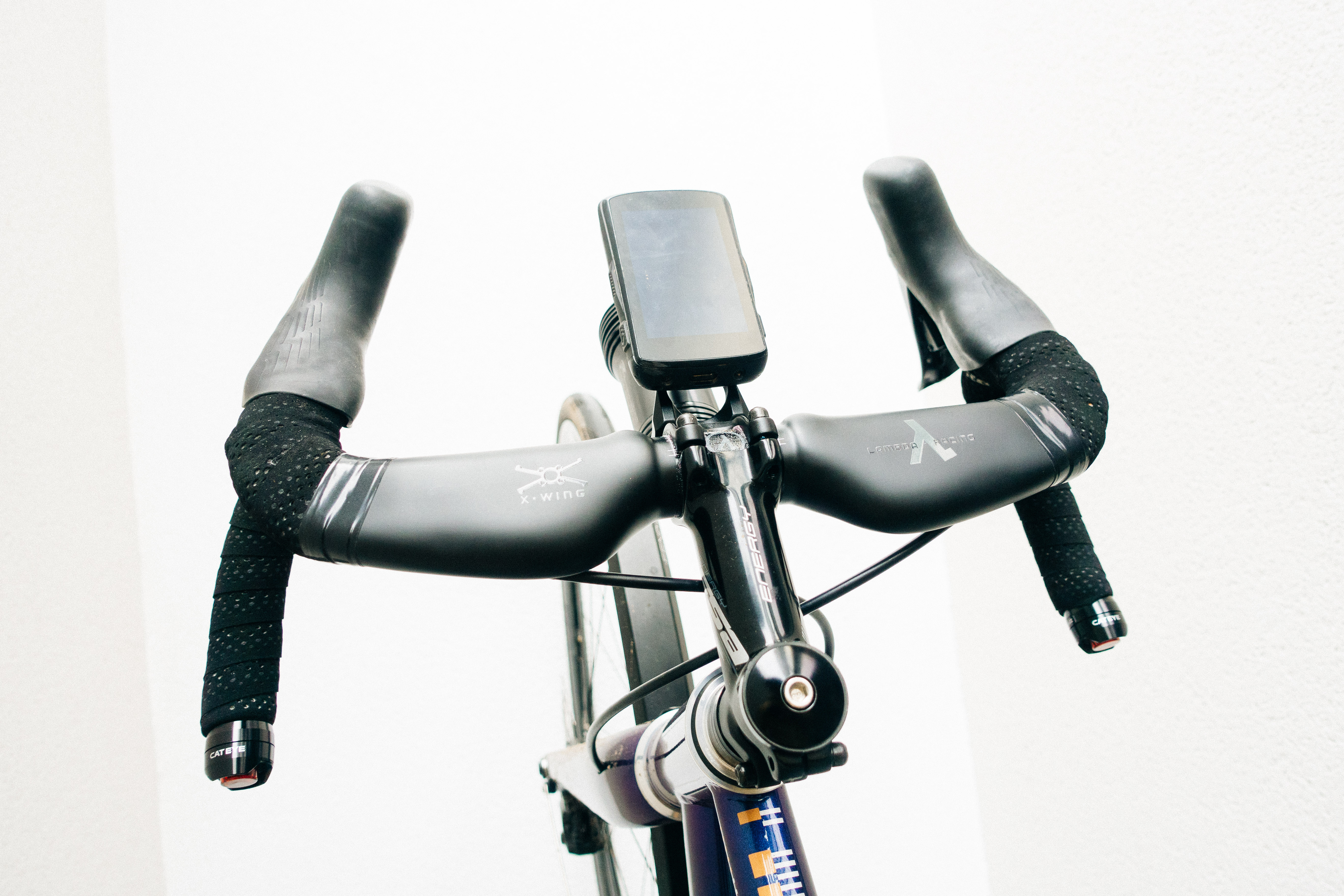
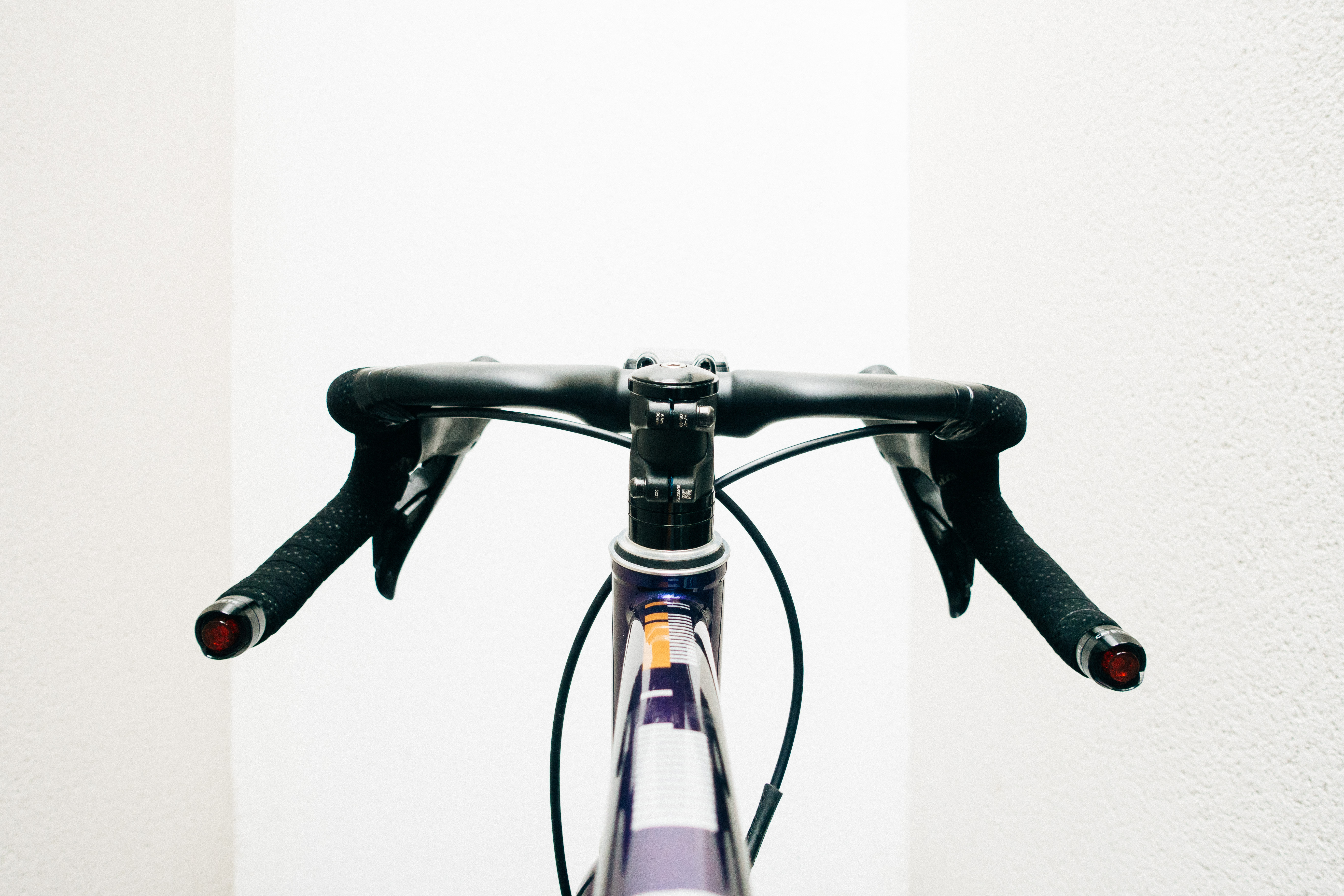
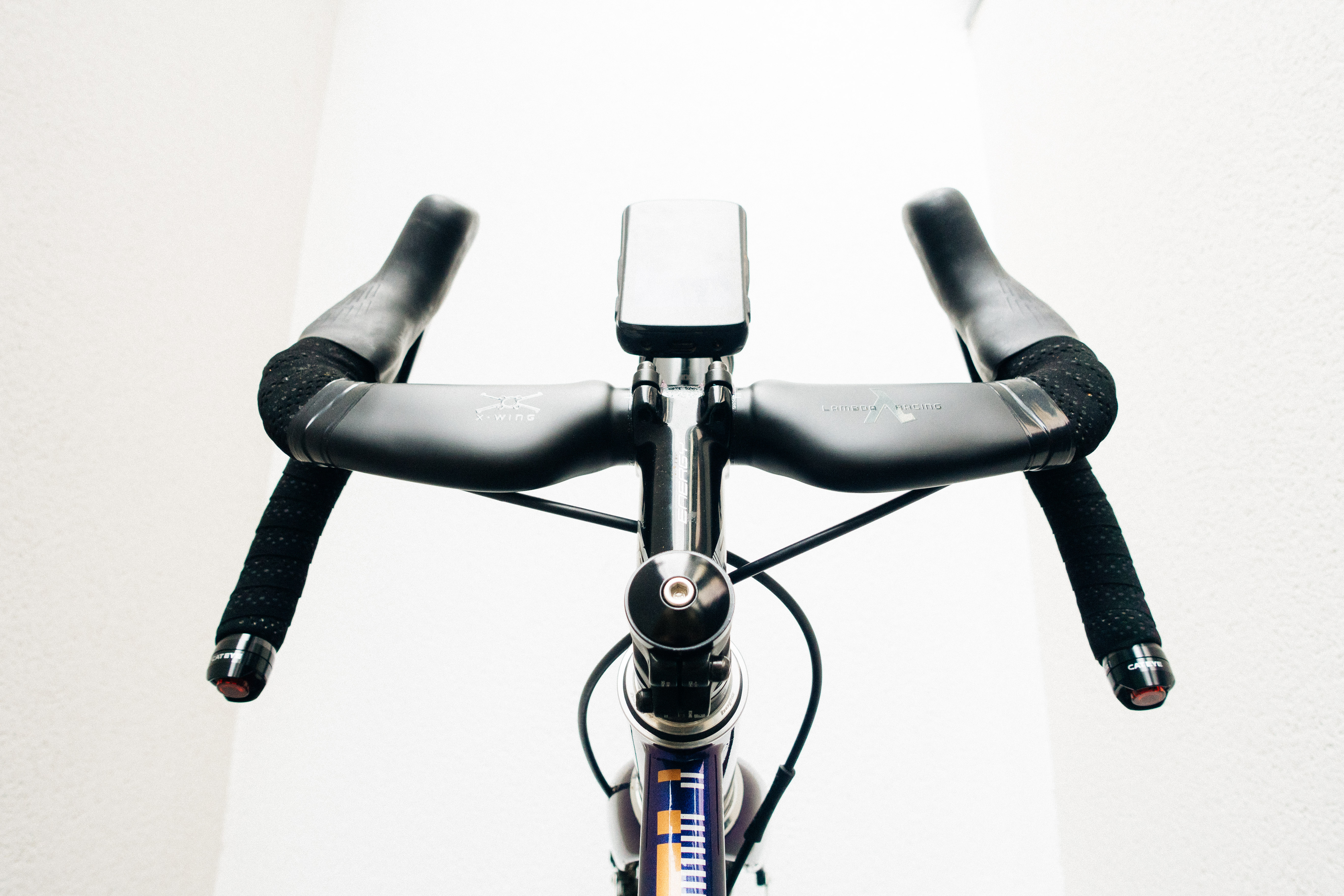
The tops are classic aero bar, though a little chunkier in form than some. They have cable trenches recessed into the underside, so don’t require any internal routing at all if you don’t want or need that. A small port near the stem clamp allows hoses and cables in, should that be your desire.
The drops are where things get interesting (ignoring the extreme narrowness for just a second). Most ‘normal’ bars feature a drop (the distance from the hoods to the drops) in the region of 130mm. At the extreme end my Deda Zero100 Deep bars have a 145mm drop, but these bars have a drop of only 105mm, coupled with a relatively short reach (the distance from the stem clamp to the hoods). This shallow drop and wider position in the drops makes it seem like this is the intended standard riding position.
The tops, centre to centre, are 33cm, and thanks to the inward angle of the hoods, the tip of of your shifters are 22cm apart. With the right grip, and the tops being flattened, this means you can essentially approximate a TT position while safely holding onto your hoods. These are quite a single minded piece of kit, but the fact that they don’t require internal routing, and have accommodations for external cables, makes them a lot more accessible than some other aero bars out there.
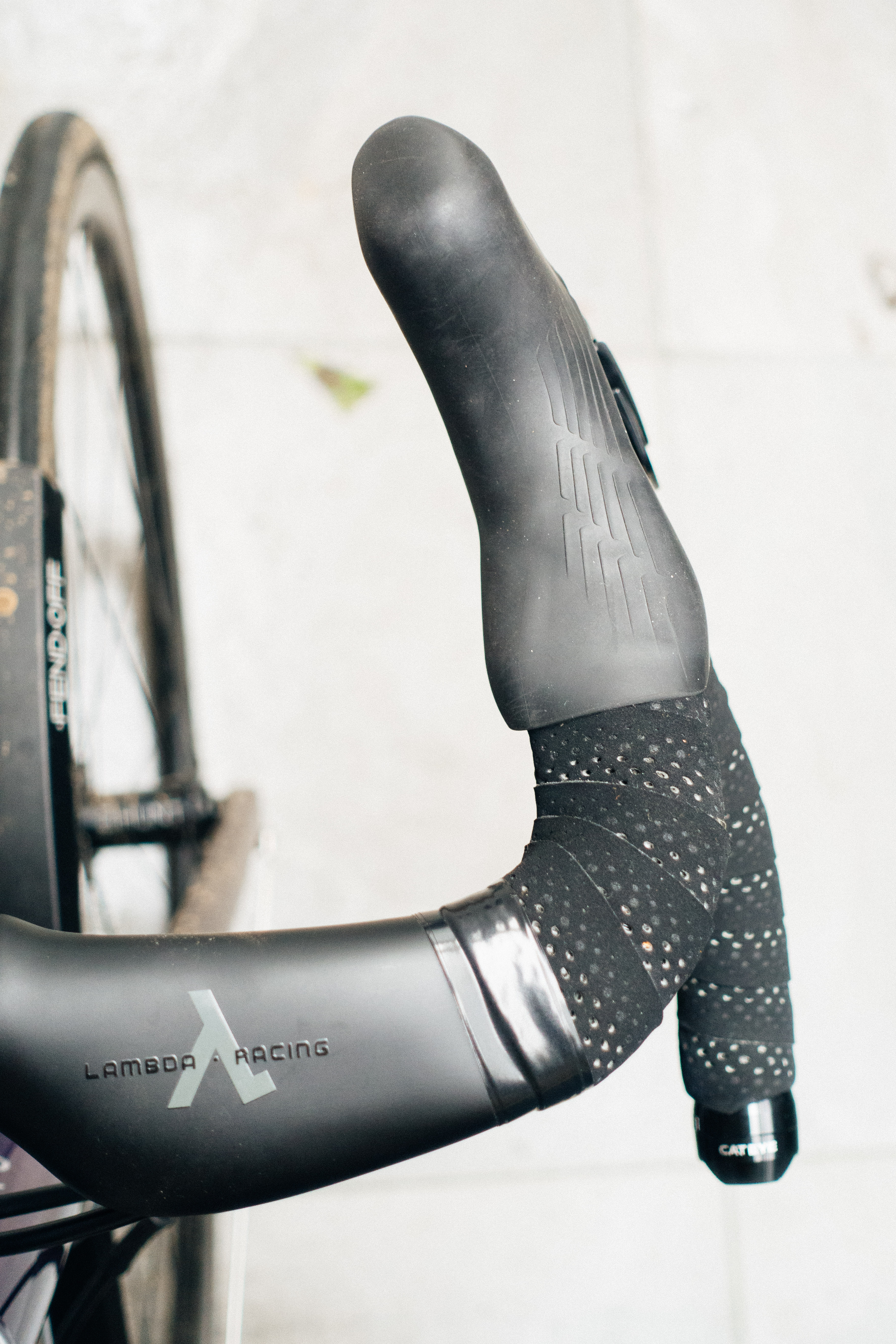
Performance
There’s this misplaced preconception that wider bars are more comfy and offer better control. I’m constantly disappointed when test bikes ship with 42cm bars because 1) that’s too wide for me according to my fit, and 2) it leaves free watts on the table. Yes, these bars are extreme but riding a 38cm or a 36cm if you’re used to a 40cm absolutely doesn’t turn your bike into some sort of twitchy, unrideable nightmare.
This misconception seems to stem from the fact that you have a shorter lever with which to make steering inputs. Sorry gang, unless it’s at really low speeds (I'm talking about navigating bike-lane chicaines) your steering input is almost entirely down to you leaning the bike over. Look down when you’re cornering next (if it's safe to do so!) and you’ll see you’ll have barely turned the bars at all. It's the same reason running a shorter stem doesn’t make your bike noticeably more twitchy either. I’ve run anything from a 60 to a 120mm stem, and bars from these up to a 44cm and the bike geometry has a far, far greater impact.
With that said, these do feel a little unstable at first, in the same way that using TT bars for the first time is a little unstable, but not nearly so extreme. By unstable I don't mean twitchy; with a narrower base your arms are creating a narrower triangle, so you feel more likely to fall over to one side or the other. In the hoods it’s perfectly controllable once you're moving at a normal speed, and in the drops is entirely normal feeling all the time. I found myself descending more in the drops on technical descents, but for normal cruising around I still stayed in the hoods, despite the low drop.
With your hands on the hoods, drop your elbows down so that your forearms are parallel with the ground, and the wattage gains are tangible. A similar position was proven to be faster by Aerocoach, and that was without an aero profile or the crazy-narrow width on offer here.
The winged sections alone are worth 12 watts over a round bar, according to Lambda’s data, but the reduction in your frontal area is going to far surpass that; Lambda claims a 23-watt saving, and while I don’t have a wind tunnel I am inclined to believe its claims. You really do tick along either faster for the same effort, or just… don’t have to try as hard.
The new position is harder on your triceps and shoulders for sure, but pretty soon the new demands placed on the body are just accepted, tolerated, and mostly forgotten as they blend into the various other myriad small aches and pains of road cycling. The short width does also leave them feeling rather too rigid to my mind, which is to be expected. There’s just less of a lever, a shorter spring, and so naturally they feel stiffer.
Cornering is probably the biggest conversation topic. “Twitchy” is, I’m afraid, the wrong word to describe the effect that the narrow hand position has on handling. It is more like a slight reduction in dexterity; a slightly less precise feeling. In hard cornering you probably want to be on the drops, as you can weight the front wheel more effectively with the inside wrist, but for just flicking the bike about to avoid potholes it’s totally fine to be up in the hoods. I still managed to avoid the seemingly endless potholes that the roads of Bristol throw up, and I bombed down wet, pitted, often muddy country lanes with only a slight increase in trepidation. I could still happily reach the brake levers at all times too, so stopping wasn’t an issue.
Where they felt most ill-at-ease was while climbing. Here the shorter lever does have a tangible effect on handling, and the bike feels more wobbly. It feels like it’s more likely to fall to one side or another, and more input is needed to counteract this. It never does fall over, it must be said, because if you are reading this I presume you know how to ride a bike, and despite being the most challenging part of the ride experience it’s also (you guessed it) fine.
If you engage your core a little more things get more stable very fast, and if you’re like me and prefer to stay seated as much as possible then it’s only going to be of minimal impact anyway. If you like wrenching the bars side to side while dancing on the pedals every time the road heads upwards like Fabio Aru, then maybe these won’t be for you.
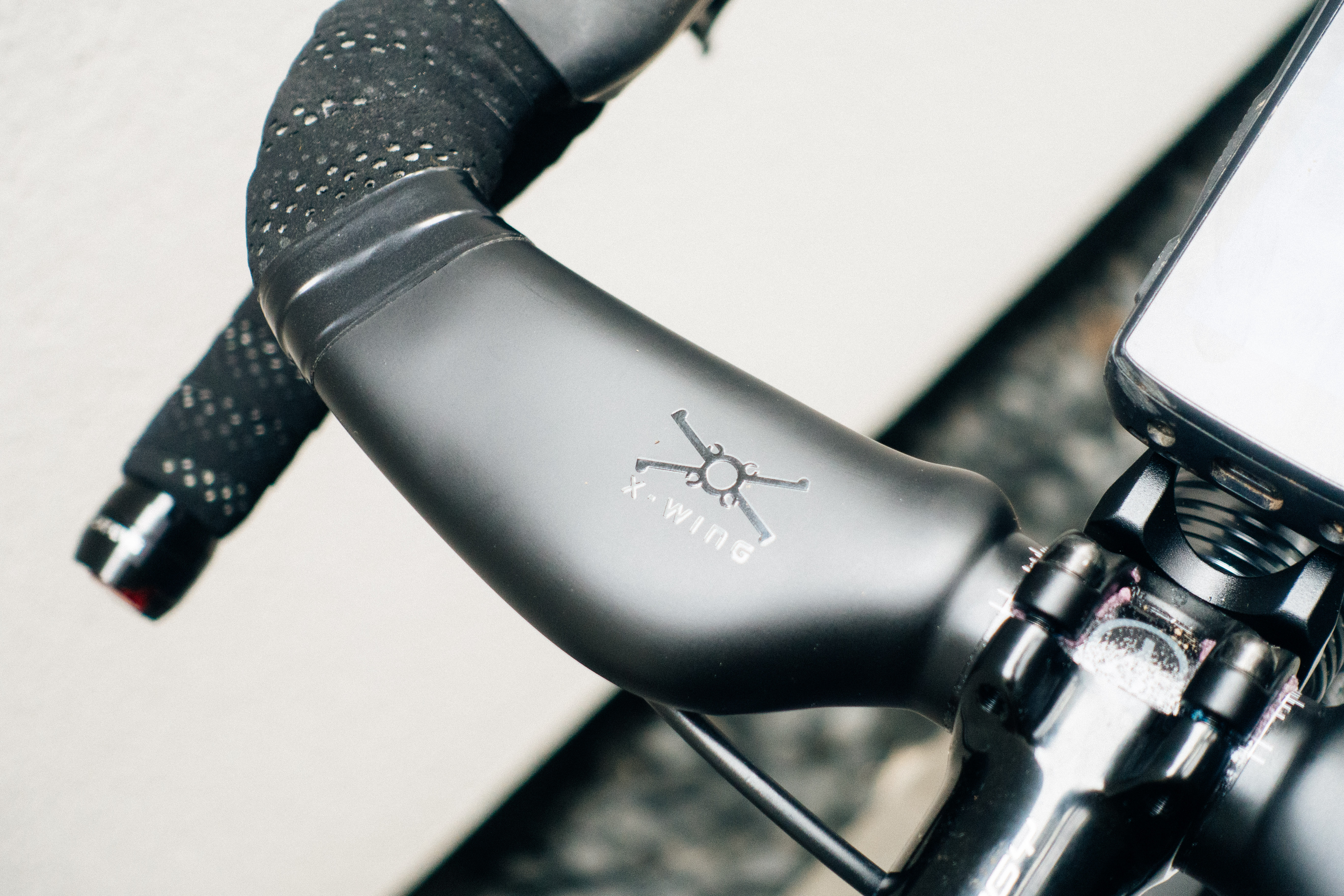
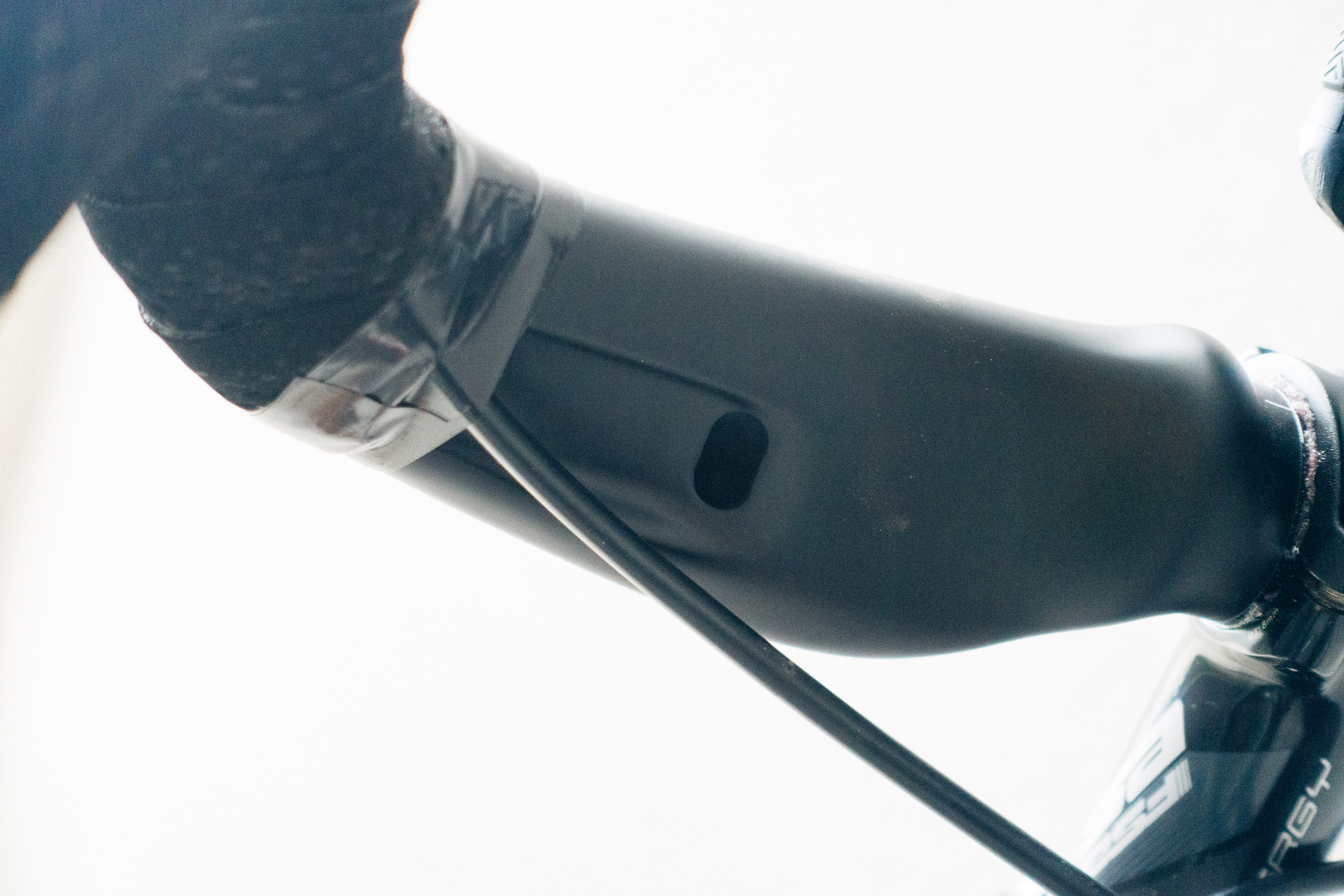
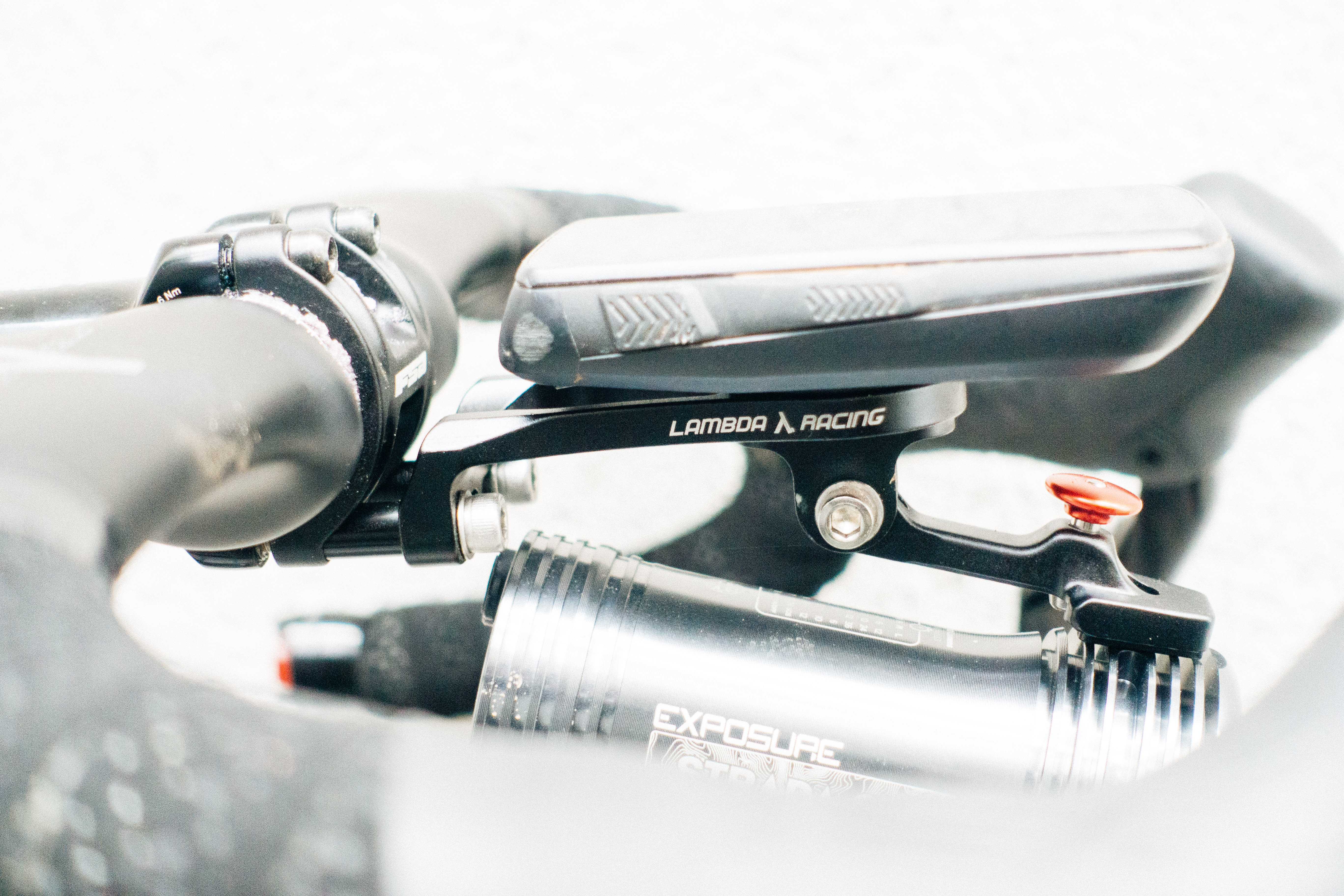
Value
Another thing that seemed to get pointed out to me frequently was that I was daft to slap these bars on the bike that I did, my long termer Fairlight Strael. The bike isn’t aero, so the commenters say, and so adding such an extreme bar is pointless. The fact is that regardless of how aero your bike is, or isn’t in my case, your body represents roughly two thirds of your overall drag.
To take an extreme scenario, the difference in wattage between the entirely un-aero Specialized Tarmac SL3 and the very much aero Venge at 40kmh is 22w, according to Ineos Grenadiers' aero expert, Dan Bigham. Upgrading to an aero frameset will cost an order of magnitude more than these bars will, for a nearly identical wattage saving. As such, I actually think these may be one of the best value upgrades you can make if you’re looking to maximise your speed for the lowest price.
I compiled a ranking of all the usual upgrades by their price per watt ratio, and these bars sit very much near the top of the pile. With Lambda's claimed savings, you’re saving something like 0.1W for every £1, versus 0.004W per £1 for an aero frameset upgrade.
If you’re starting to dabble in TT or triathlon these are also likely a great option, especially if you have external cables. You can swap them in well under an hour, and reap the rewards on race day, before swapping back to normal bars with ease.
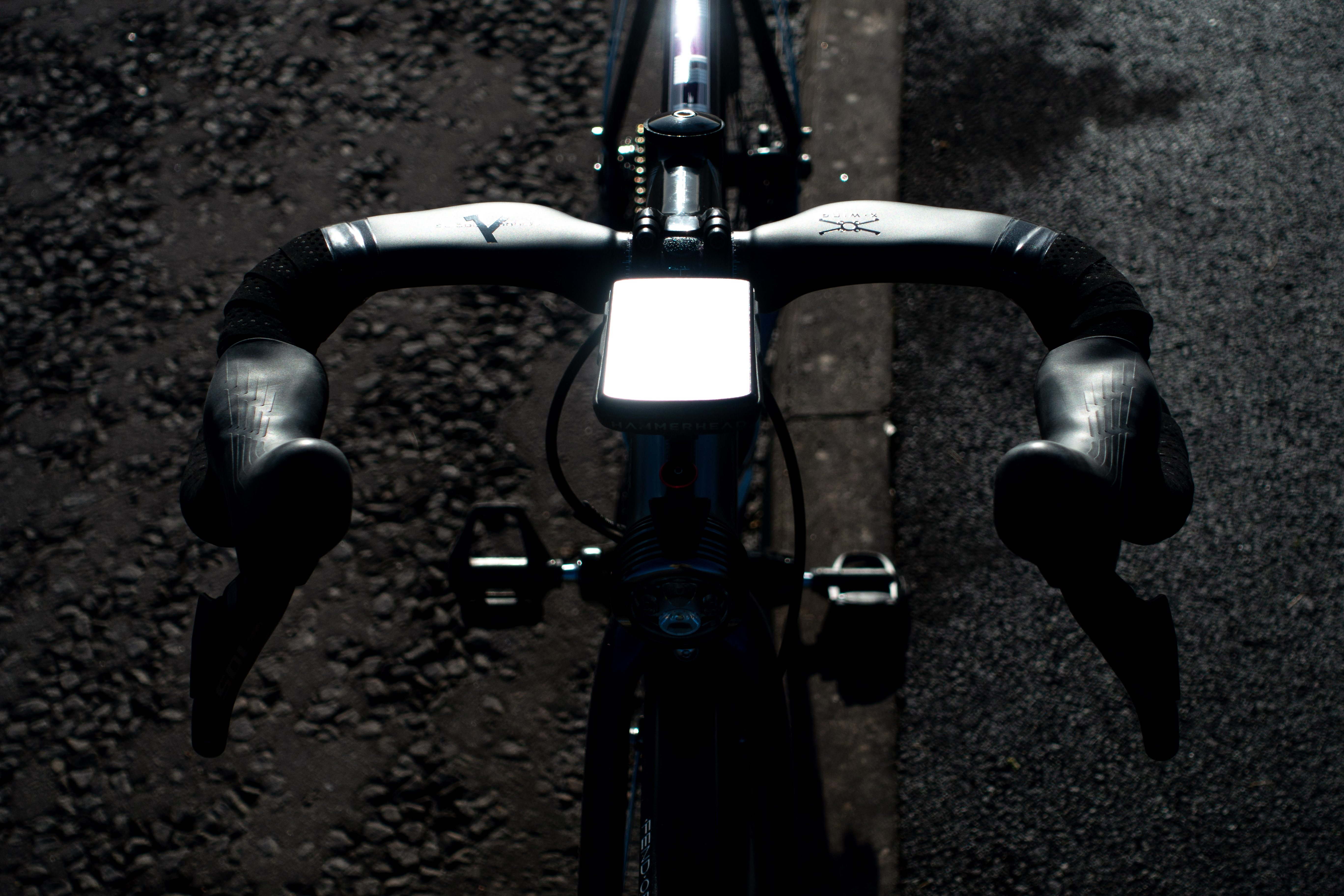
Verdict
As ever, ‘don’t read the comments’ is true. For the most part these bars aren’t nearly as difficult to ride as you’d expect if you're a reasonably competent bike handler, and the wattage benefits they can bring for the price is pretty bonkers. You lose a bit of preciseness in hard cornering if you stay on the hoods, but you get it all back if you head to the drops. The only time I really didn’t enjoy them was when climbing out of the saddle.
I actually enjoyed using them a lot more than I expected, as despite slight shoulder and tricep discomfort to start with… going faster for less effort is basically one of the best things about new bike tech, right?







